
This is the unmissable hike in Maui and it's also the nicest hike on the island! The trail itself is pleasant, shady and passes close to the Palikea Stream which originates on the slopes of Haleakalā. But it's the second part of this little hike that makes it so interesting! On the program beautiful waterfalls and bamboo forest!
1The Pīpīwai Trail step by step
The Pīpīwai Trail is located in southeast Maui, in the Kīpahulu area of the Haleakalā National Park (see below: How to get to the Pīpīwai Trail). It is accessible to all because despite its length, the trail climbs gently (the difference in altitude is 250 meters) and does not require intense effort to reach the end of the trail. Count between 2h00 and 2h30 to make the round trip of 5.8 km.
To reach the beginning of the trail from the park parking lot, you must first cross the Hāna Highway and then follow the signs along the Palikea Stream.
The trail begins by gently ascending towards the green foothills of Haleakalā. Then you get a little higher thanks to a few steps that have been built here to facilitate the ascent. We will find this arrangement of steps regularly throughout the hike, which will allow a quick crossing of some potentially muddy and slippery areas.
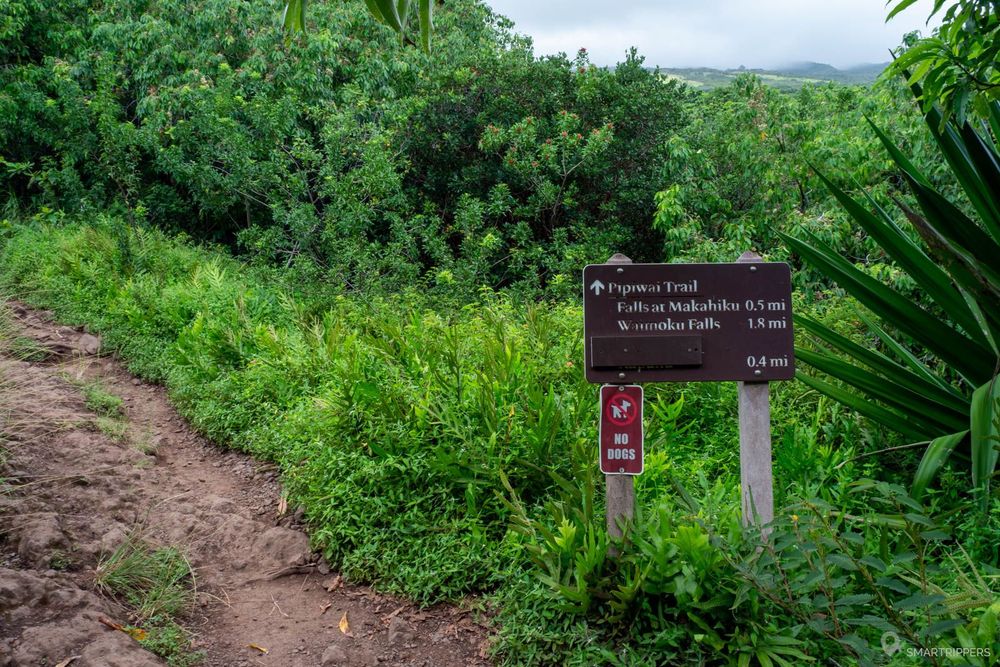
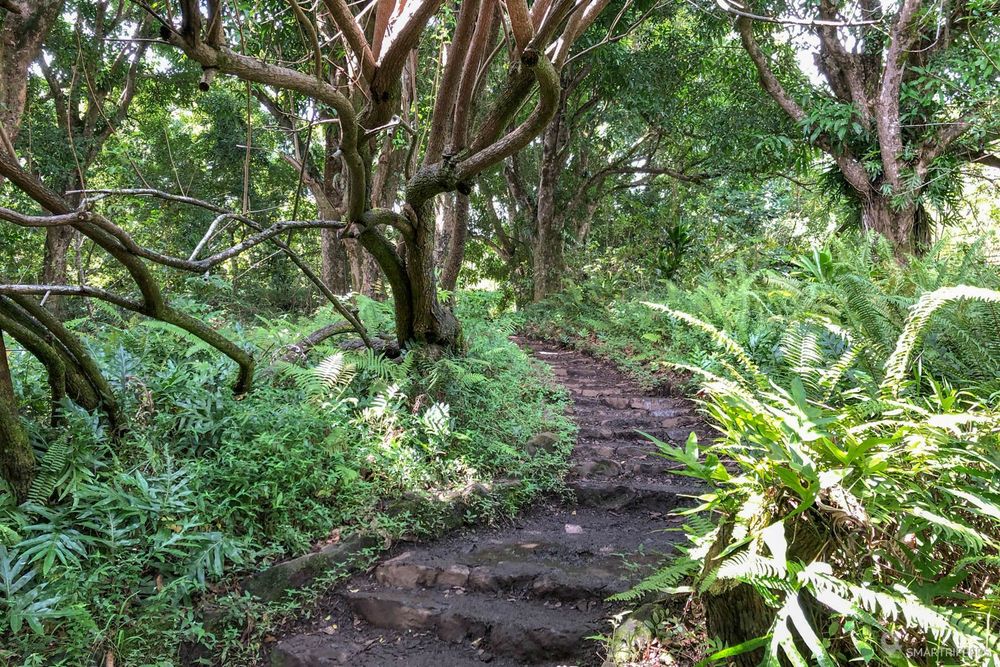
After 800 meters, we reach the first interesting point of view of this hike over the Makahiku Falls. Depending on the rains, this waterfall will have a more or less strong flow.
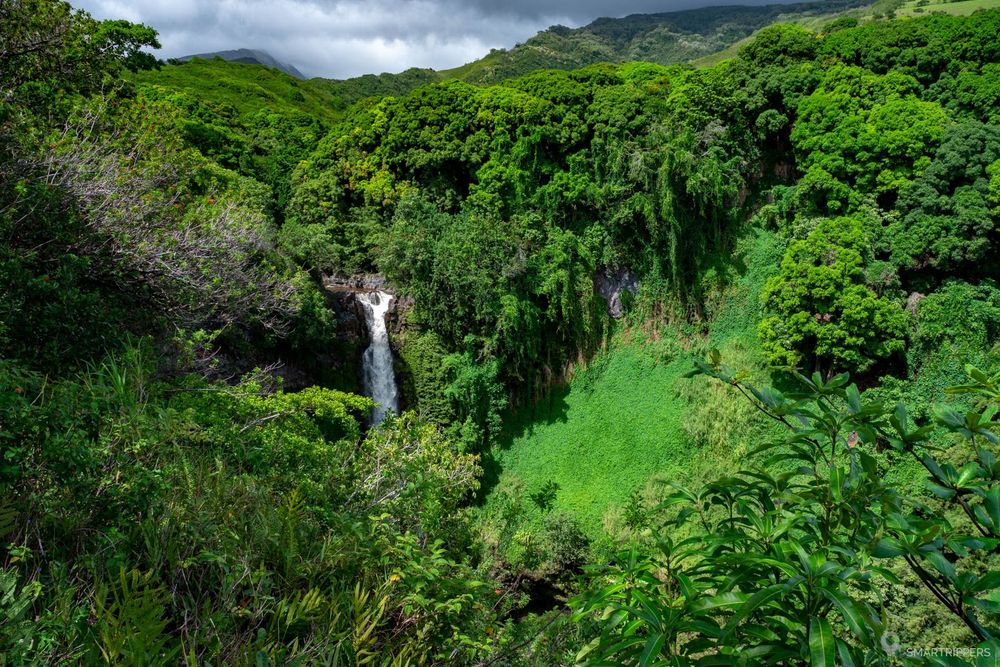
This flow will be a good indicator for the rest of the hike because if it is very low, it is likely that the waterfalls at the end of the hike will be less interesting.
The trail then continues its ascent. Some slightly muddy areas are to be expected, but nothing really annoying.
After a few hundred meters, you will be able to admire an imposing banyan tree (which served as a natural umbrella on our way back, when a tropical rain suddenly fell on us).
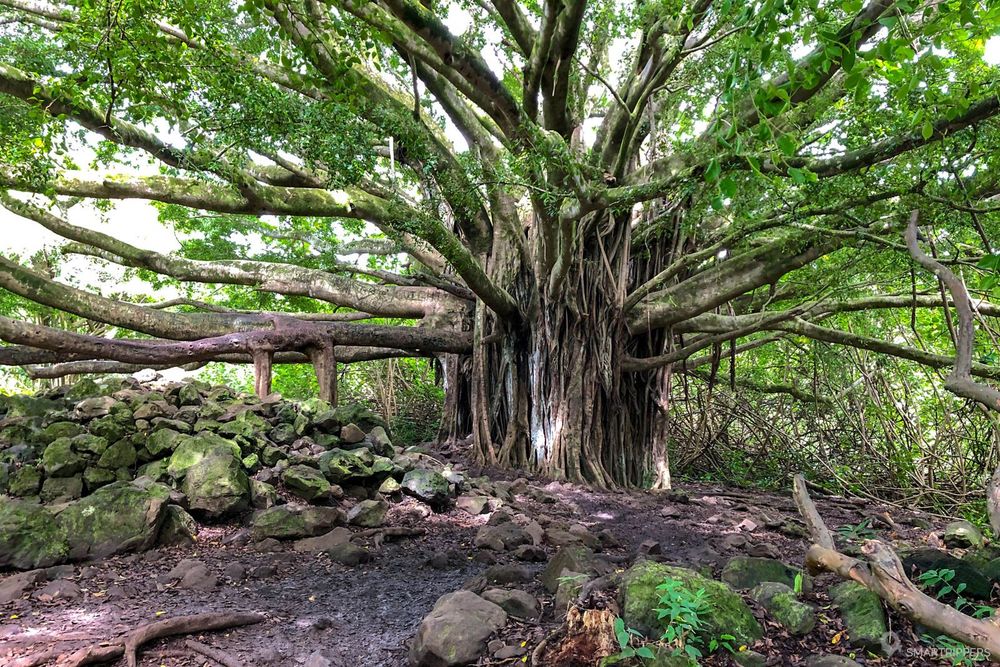
The ascent continues gently for another 200 metres before reaching the first footbridge, marking the beginning of the interesting area. From here, you can admire the two beautiful waterfalls that cascade down with a loud noise beneath your feet. These will be stronger and browner if it rains or if it has been raining recently.
Take time to notice the vegetation that covers the hill in front of the bridge. You will see that it is covered with bamboos that we will soon cross.
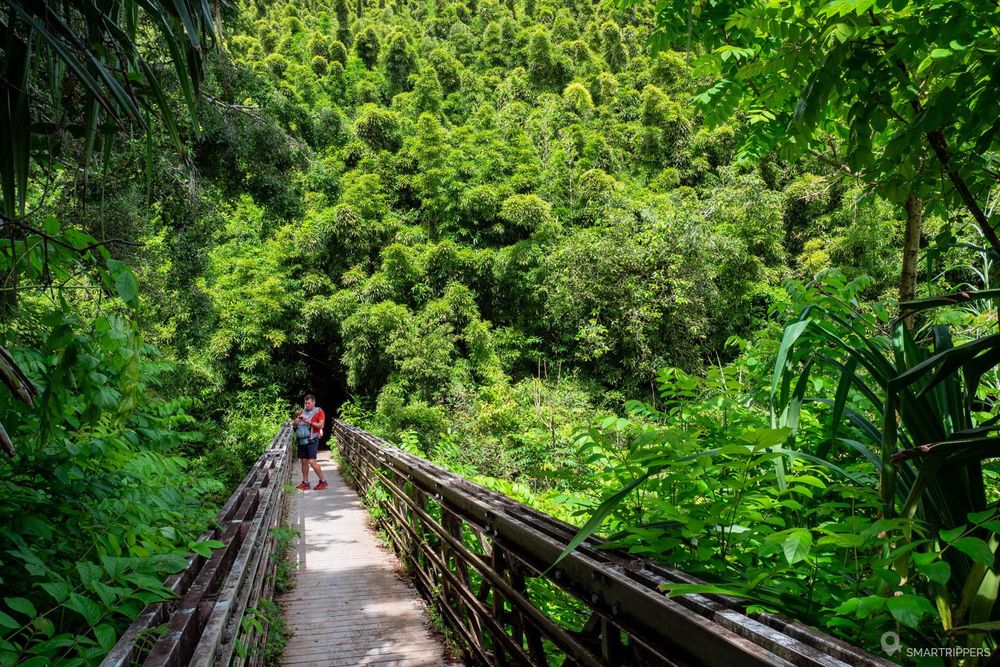
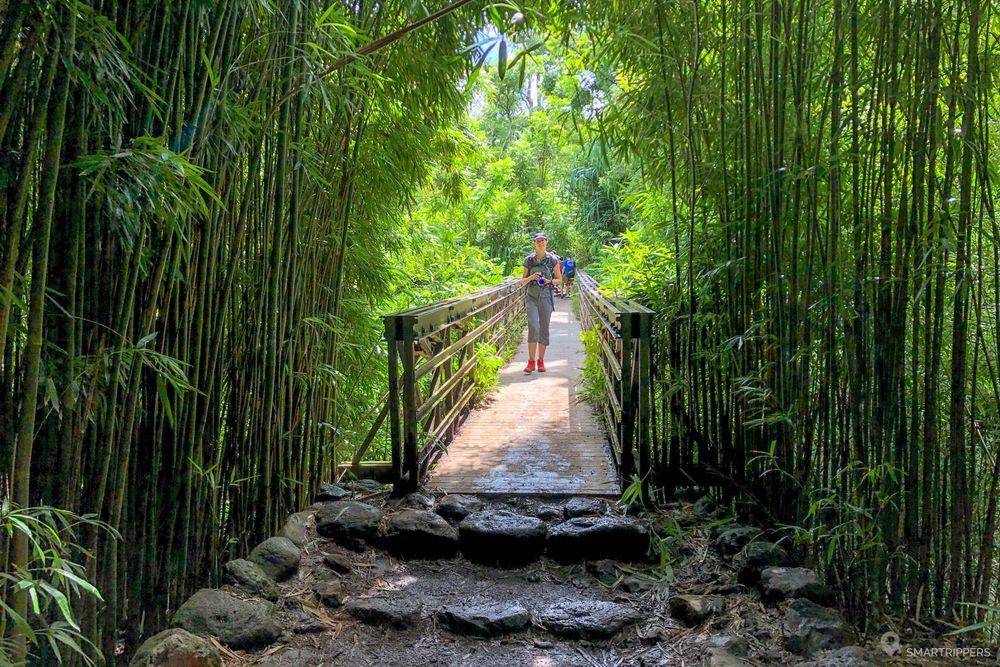
After a few meters climbing up through the bamboos we will arrive at the second footbridge which offers a nice view of the first one.
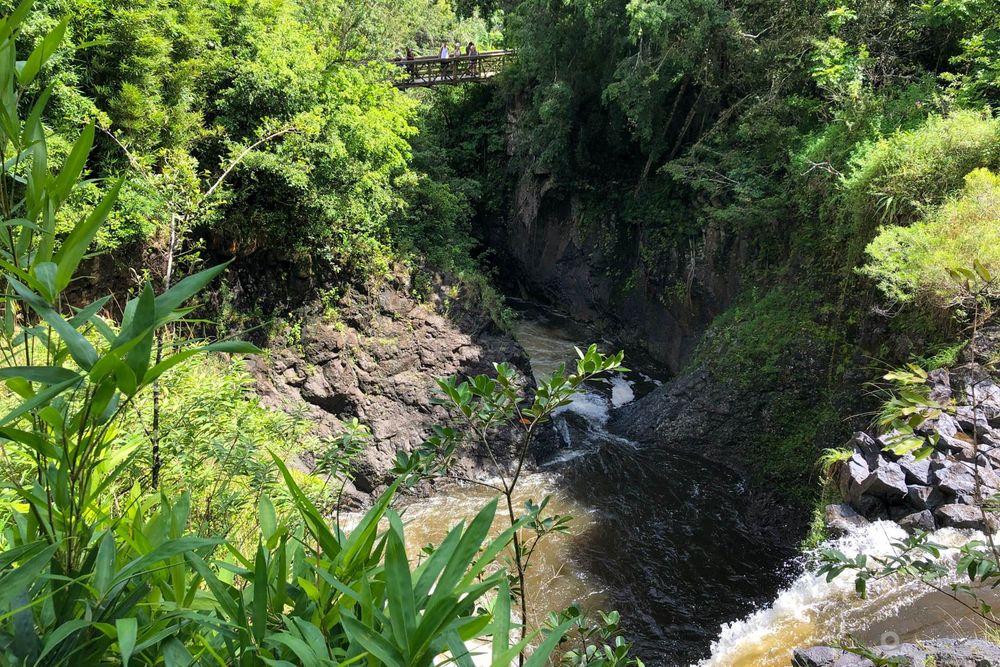
The ascent then continues with a few steps through the bamboo forest. The place is really beautiful and photogenic!
Soon a large composite pontoon will take over the muddy path and will greatly simplify the continuation of the walk.
Listen for the bamboo rattling, like a whisper of percussion.
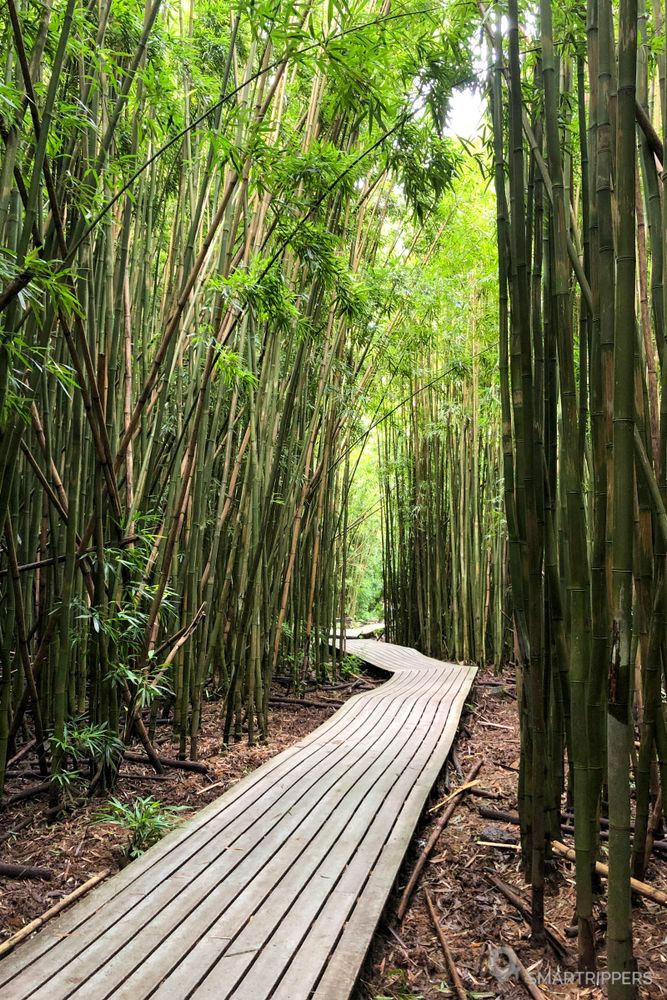
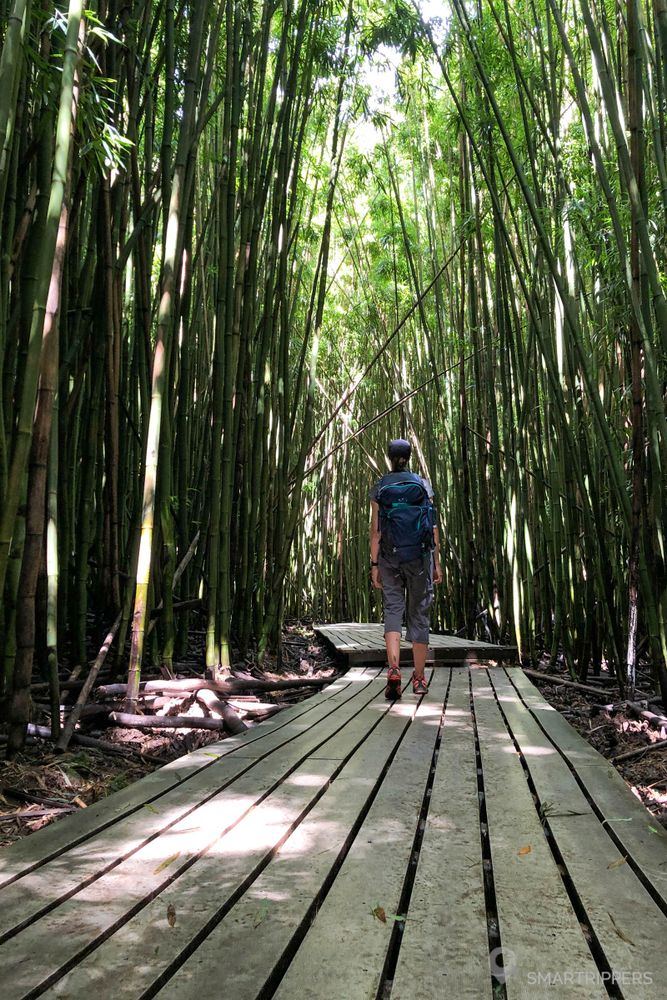
After the pleasant stroll among the bamboos, the path looks out over the river and you can hear the sound of the waterfall. No doubt, we are not very far!
The muddy path at the end brings us in about ten minutes to the foot of the natural amphitheatre, the ultimate goal of this hike. One more area with composite boards and we are now in sight of the waterfalls! It's gorgeous!
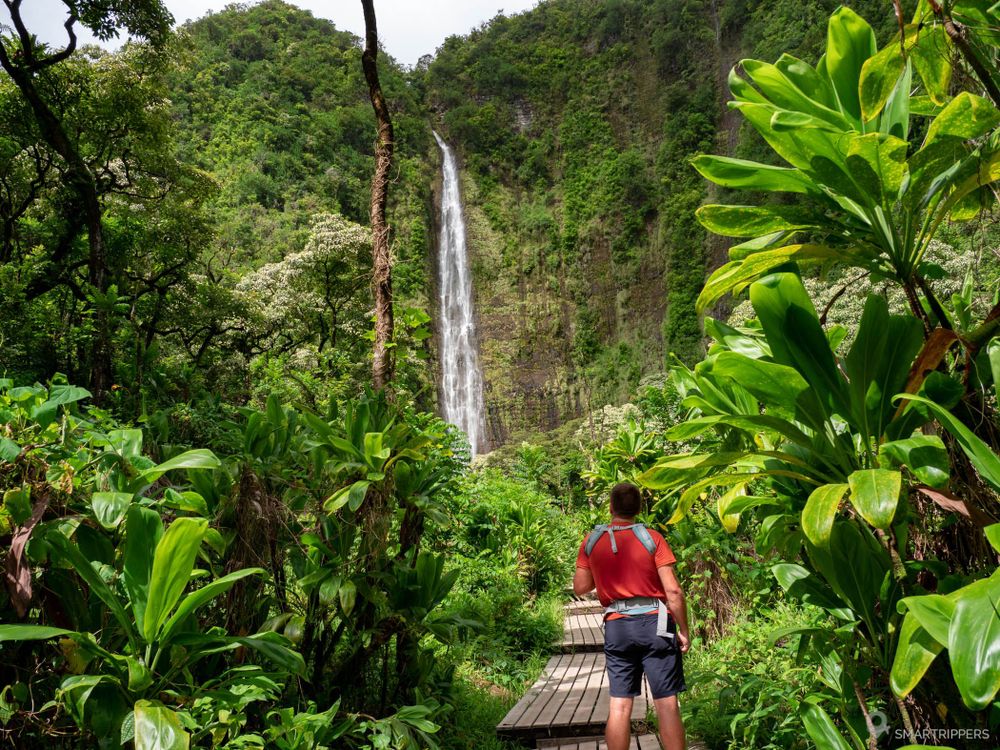
The amphitheatre is covered with small streams of water that flow down the walls and turn into waterfalls after a heavy rainfall. The beautiful Waimoku Falls sits in the middle, alongside two of its smaller sisters. It's a beauty!
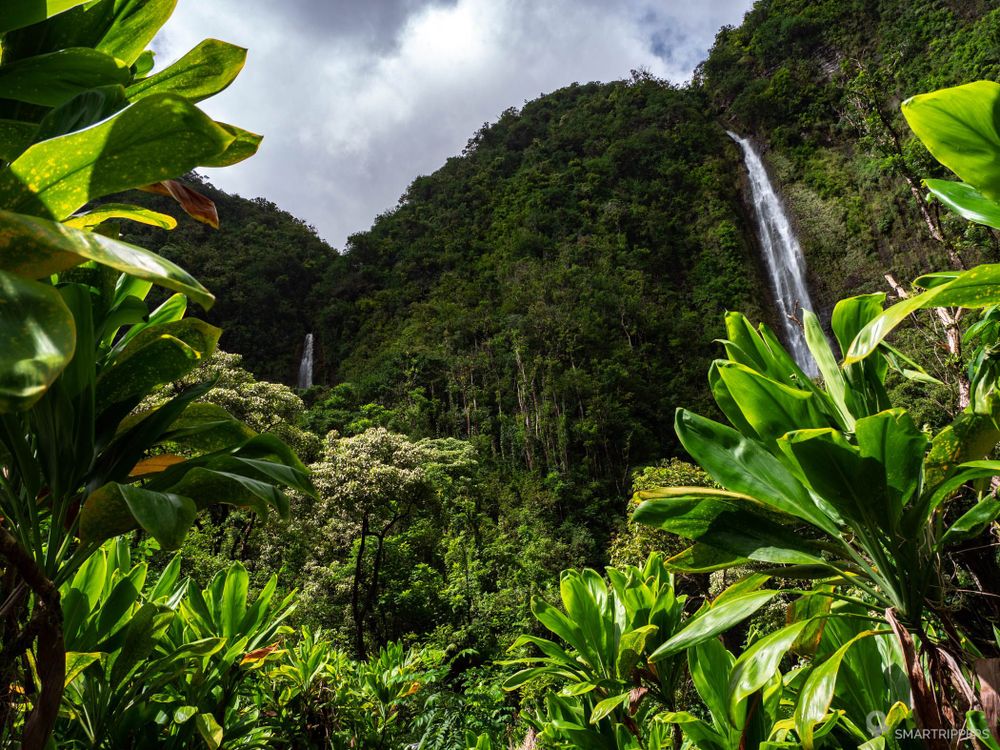
The flow of water was pretty heavy the day we came. If the weather has been dry for several days, the waterfalls are less impressive.
There are still a few meters to go to get as close as possible to the big waterfall and its river, but we will have to cross the only big obstacle of this trail to get there: a small stream from the nearby waterfall that could be quite turbulent as indicated by the signs just beside the ford.
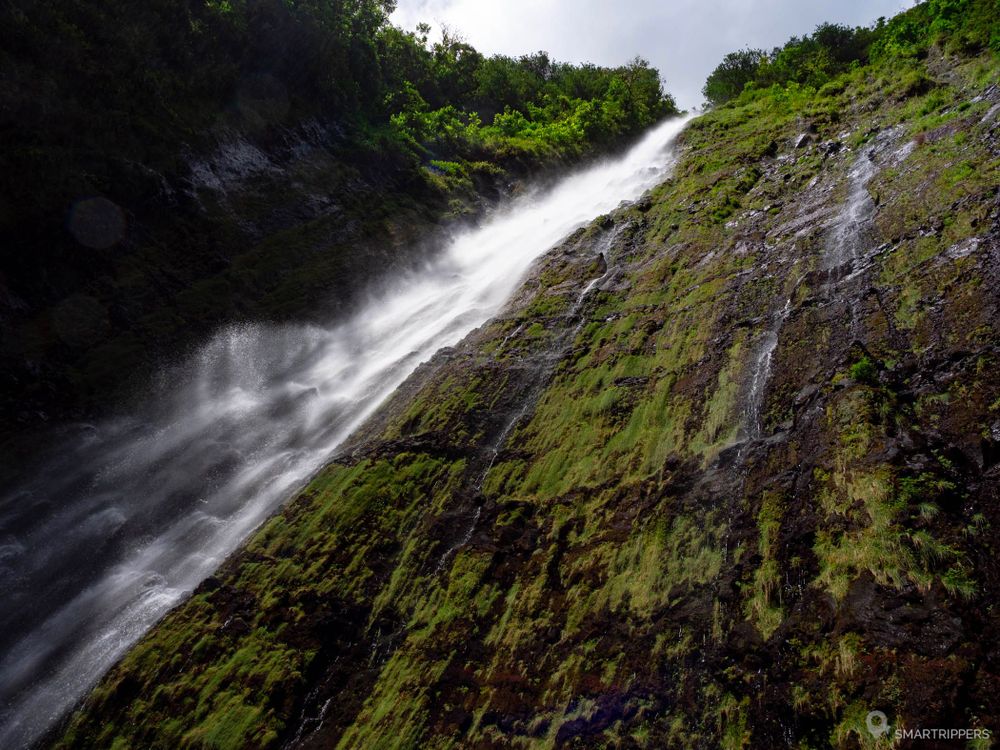
Do not attempt to cross in case of flooding, it could be extremely dangerous.
At the end of the trail, signs block access to about fifty meters from the falls. These signs will make you aware of the dangers of floods. It is possible to pass by, but it will be at your own risk. We strongly advise you against it because the flow of the falls can change suddenly if clouds laden with water develop out of your sight on the sides of Haleakalā.
As said before, we were surprised when we came by torrential rains while going down the trail. I would not have liked to be in the riverbed at that time, it took less than 5 minutes to grow!
The return to the parking lot will only be a formality as long as the weather is good. For once the path is not too slippery on the way down!
2How to get to Pīpīwai Trail
The hike starts from the parking lot in the south end of Haleakalā National Park, at Kīpahulu Visitor Center. To reach the Visitor Center, either take Highway 31 (the Piilani Highway) or the long, winding Hāna Highway.
We personally find it more convenient to get there via Highway 31, which is much less traveled than the Hāna road, despite the narrow, unpaved section at the end. You can also include the Pīpīwai Trail hike in a long journey to do the entire eastern part of Maui starting with the Piilani Highway early in the morning and continuing on the Hāna Highway. It will be a busy day but well worth it!
Note that you will have to pay an entry fee of $30/car to access the hike at Haleakalā National Park.
If you buy the access pass to Haleakalā, it is valid for 3 days. In this case, it will be interesting to combine your ascent to the top of Haleakalā during this period to avoid having to pay for a new pass, unless you opt for the Hawai 'i Tri-Park allowing 1 year access to the 3 national parks of Hawaii for 50$/car.
3Our advice and recommendations
We recommend that you start the hike as early as possible to avoid rain, which usually arrives in the early afternoon.
Don't forget to take a raincoat with you even if the sky is blue. The weather changes very quickly in this part of the island, especially on the heights of the trail, as we have witnessed. We really regretted not taking our raincoats, we were soaked to the bone when we arrived at the car.
Finally, remember to check on the website of Haleakalā National Park that the trail is open: it is not uncommon that the access is closed because of bad weather or floods that damaged the trail.
The surroundings evolves as the hike progresses.
The photogenic bamboo forest.
The beautiful waterfalls at the end of the trail.
We are Sandrine and Flo, French thirty-somethings. In 2019 we quit everything to live our dream, become nomads and travel around the world. We left with our baby, Lena, who was only 5 months old at the time. After a first trip around the Pacific Ocean by plane and a long 3 months stay in Hawaii, we left to discover Iceland for 3 months on board our 4WD pickup truck and truck camper. Then we continued our adventure in North America.
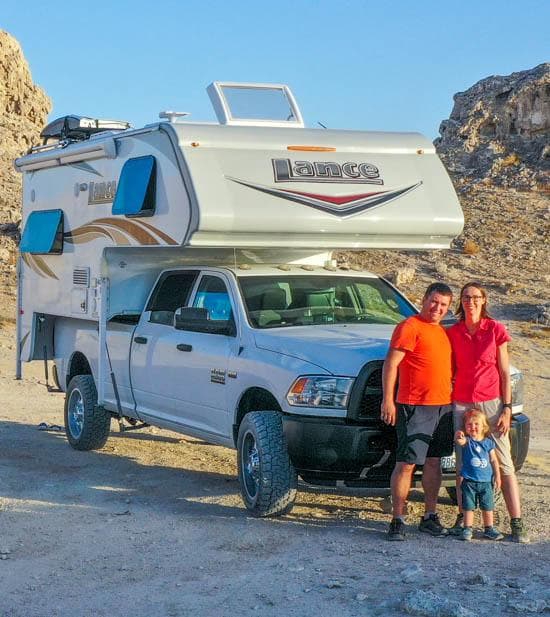
Today, if we can continue this adventure, it is above all thanks to our blog, Smartrippers! We created it one day in 2016, with the desire to share our good travel tips, without thinking that it would lead us there! We have developed it a lot over the years and have become experts on our 3 favorite destinations: Hawaii, Iceland and the American West. We now guide you to these destinations to help you plan the trip of your dreams!
Follow our adventures!